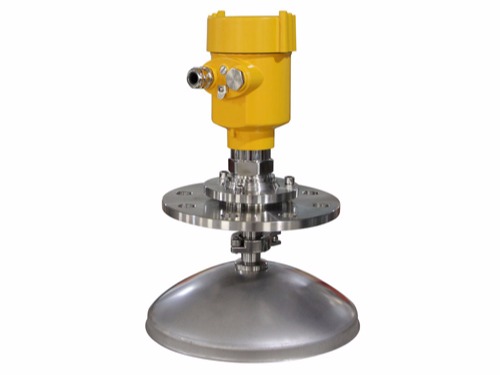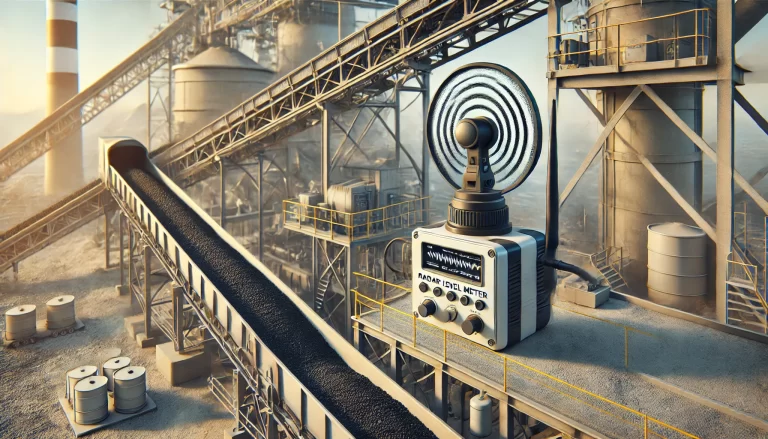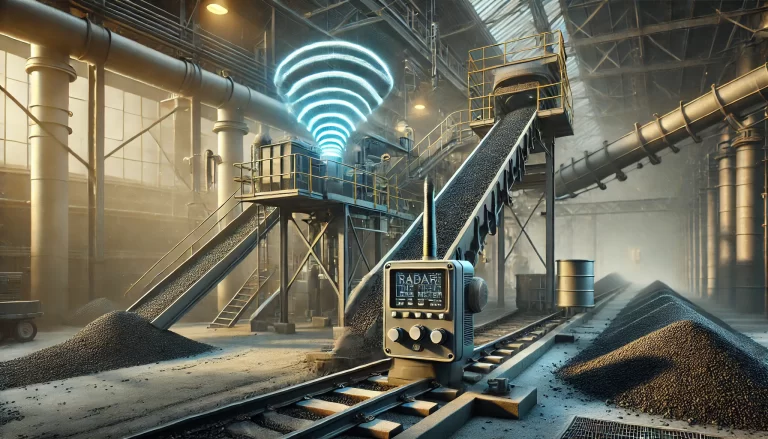In modern coal-fired power plants and coal chemical production, accurate level measurement is critical for ensuring continuous and efficient operations. Specifically, precise monitoring of the material level on coal mill conveyors is essential not only for maintaining the stable operation of equipment but also for enhancing production efficiency and safety. This article will discuss the application and advantages of radar level meters on coal mill conveyors.
Importance of Level Measurement on Coal Mill Conveyors
The coal mill is a crucial component in coal-fired power plants and coal processing facilities, responsible for grinding raw coal into fine coal powder for combustion in boilers or further processing. The conveyor system plays a vital role by transporting raw coal from storage silos to the mill. Accurate level measurement on these conveyors is fundamental to the stability and safety of the entire production process.

Working Principle of Radar Level Meters
Radar level meters are non-contact measuring instruments that operate based on the principle of electromagnetic wave reflection. The device emits electromagnetic wave pulses from a transmitting antenna. When these pulses encounter the surface of the material, a portion of the energy is reflected back and captured by a receiving antenna. By calculating the time difference between the emission and reception of the pulses and considering the speed of electromagnetic wave propagation, the distance to the material surface can be accurately determined, enabling precise level measurement.
Installation and Application
On coal mill conveyors, radar level meters are typically installed above or to the side of the conveyor to facilitate real-time monitoring of the material. Continuous measurement provided by radar level meters allows operators to promptly understand the level of material on the conveyor and make necessary adjustments, such as altering the conveyor speed, to maintain process stability.

Key factors to consider for the selection and installation of radar level meters include:
Measurement Range: Selecting a radar level meter with an appropriate range based on the width of the conveyor and the expected material accumulation.
Measurement Accuracy: Choosing a radar level meter with the precision needed to meet production requirements.
Environmental Conditions: Considering factors such as temperature, humidity, and dust concentration to select a suitable model with the appropriate protection level.
Optimal Placement: Ensuring the radar level meter is installed in a position that accurately reflects the material level on the conveyor while avoiding interference and obstructions.
Advantages Over Traditional Methods
Compared to traditional level measurement methods, such as weight-based systems and ultrasonic meters, radar level meters offer several significant advantages:
Higher Accuracy and Stability: Radar level meters provide more precise and consistent data, which helps minimize production instability caused by fluctuations in material levels.
Real-Time Monitoring: Continuous level monitoring enables operators to detect and address potential issues promptly.
Reduced Maintenance: The non-contact nature of radar level meters reduces wear and tear, leading to lower maintenance costs.
Adaptability to Harsh Environments: These meters are suitable for challenging conditions, including high dust levels and variable temperatures, ensuring reliable long-term operation.

Conclusion
The application of radar level meters on coal mill conveyors offers an efficient, accurate, and reliable solution for level measurement. Their ability to provide real-time monitoring and adapt to harsh environments makes them a superior choice compared to traditional methods. By implementing radar level meters, companies can enhance operational stability, improve production efficiency, and ensure the safety of their processes.
